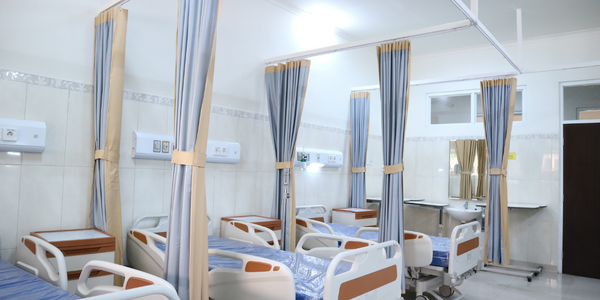Customer Company Size
Large Corporate
Region
- Europe
Product
- IBM TRIRIGA®
Tech Stack
- Integrated Workplace Management System
Implementation Scale
- Enterprise-wide Deployment
Impact Metrics
- Cost Savings
- Productivity Improvements
- Environmental Impact Reduction
Technology Category
- Functional Applications - Enterprise Resource Planning Systems (ERP)
Applicable Functions
- Facility Management
Use Cases
- Building Automation & Control
Services
- System Integration
About The Customer
The customer is a European manufacturer with a significant workplace portfolio, comprising several hundred locations and more than 15 million square feet. In 1999, the company was essentially an ad hoc workplace organization with workplace services totally decentralized to the operating regions. Each region utilized its own systems, with little or no consistency in operating processes, standards, or performance metrics. Real estate management operated separately from facilities management with little coordination between the two functions. The company deployed 65 different point solutions with virtually no interoperability between the tools or corporate enterprise systems.
The Challenge
The European manufacturer was under pressure to grow while also meeting aggressive cost reduction targets. The company's workplace services were decentralized, with each region using its own systems and little consistency in operating processes, standards, or performance metrics. Real estate management operated separately from facilities management with little coordination between the two functions. The company deployed 65 different point solutions with virtually no interoperability between the tools or corporate enterprise systems. There was a critical need to change course in workplace management.
The Solution
The company moved from a decentralized group of regional facilities and real estate organizations to a fully-centralized and matrixed organization. This enabled close coordination and alignment with the regional business units. The company implemented IBM's Integrated Workplace Management System (IWMS), IBM TRIRIGA®, which helped the organization efficiently manage its real estate portfolio and optimize space utilization. The IWMS system from IBM tracks space utilization, including employees who work from home, and thus can systematically track and scale workplace resources to meet organizational growth. The company also utilized the IWMS system to track four dimensions of performance: financial, customer, people, and workplace processes.
Operational Impact
Quantitative Benefit

Case Study missing?
Start adding your own!
Register with your work email and create a new case study profile for your business.
Related Case Studies.

Case Study
Turning A Stadium Into A Smart Building
Honeywell created what it called the “intelligent system” for the National Stadium in Beijing, China, turning the venue for the opening and closing events at the 2008 Summer Olympics into a “smart building.” Designed by highly controversial artist Ai Weiwei, the “Bird’s Nest” remains one of the most impressive feats of stadium architecture in the world. The 250,000 square meter structure housed more than 100,000 athletes and spectators at a time. To accommodate such capacity, China turned to Honeywell’s EBI Integrated Building Management System to create an integrated “intelligent system” for improved building security, safety and energy efficiency.

Case Study
BACnet enabled Wireless Temperature Monitoring System
Client offered a Temperature Monitoring System which consists of Wireless Transmitters and Application Software. Third party BACnet Application such as a Building Automation System needs access to vital parameter such as temperature, humidity, CO2, etc., measured by wireless sensor devices. Client needed a solution to allow data exchange from its Temperature Monitoring System with BMS.

Case Study
Medanta the Medicity
Medanta is one of India's largest multi-super specialty institutes located in Gurgaon, India. Some of the key challenges facing Medanta included: - No Monitoring & Control over Energy Use, Indoor Air Quality, Indoor Lighting Quality & Noise Levels. - No compliance monitoring of temperature & pressure in critical care wards. - Energy bills were a surprise with no way to forecast energy costs. - Missing data & insights that could be used for targeting areas of improvement. - Existing Billing Management System (BMS) was inflexible and could not be used across the enterprise to serve the needs of different users. Requirements Based on these challenges, Medanta was looking for a comprehensive solution to Monitor & Control: - Energy Usage - Power Generators - Clean Rooms - HVAC Temperature - Chiller Temperature - Hydrant Pressure - Air Quality & Noise Levels - Critical Wards

Case Study
Sirqul and Catalyst Workplace Activation Reveal the Future of Smart Offices
This partnership will disrupt the “traditional” office furniture conversation by examining the intersection of people, place, and technology. We realize it is increasingly evident that the design of spaces is an enabler to meaningful interactions between people and fosters a sense of community and culture by taking on the challenges of designing for a more productive, collaborative, and inspiring workplace, leveraging technology to process data on how people work, communicate and engage with one another.

Case Study
Ensures Cold Milk in Your Supermarket
As of 2014, AK-Centralen has over 1,500 Danish supermarkets equipped, and utilizes 16 operators, and is open 24 hours a day, 365 days a year. AK-Centralen needed the ability to monitor the cooling alarms from around the country, 24 hours a day, 365 days a year. Each and every time the door to a milk cooler or a freezer does not close properly, an alarm goes off on a computer screen in a control building in southwestern Odense. This type of alarm will go off approximately 140,000 times per year, equating to roughly 400 alarms in a 24-hour period. Should an alarm go off, then there is only a limited amount of time to act before dairy products or frozen pizza must be disposed of, and this type of waste can quickly start to cost a supermarket a great deal of money.




